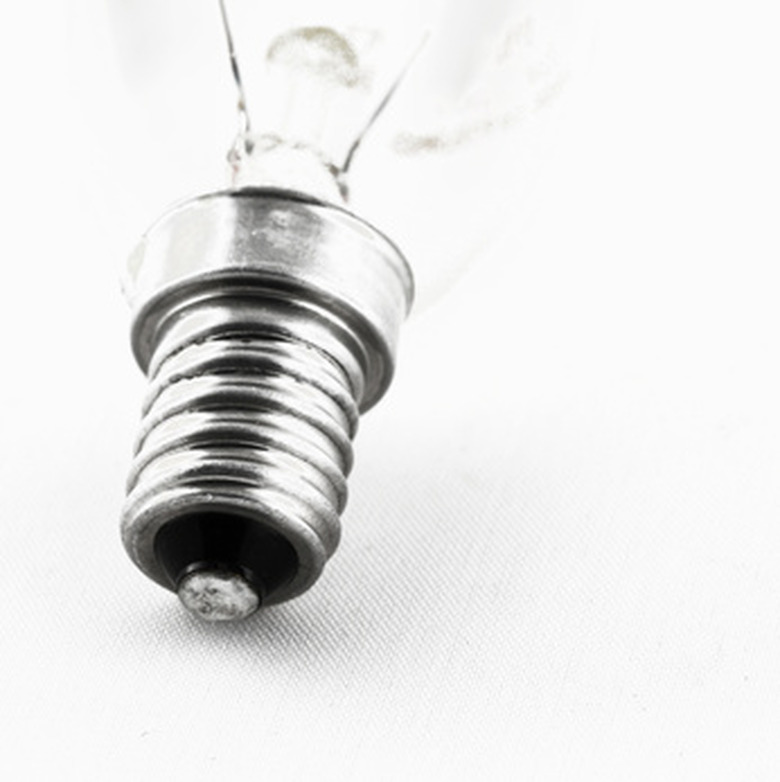How To Determine Light Bulb Base Type
Tip
Determining the type of bulb may also help you in identifying the base type. Incandescent bulbs are most commonly screw bases, while florescent tubes utilize bi-pins. CFLs can be any base type, but are the only ones that sometimes use the plug-in base.
Light bulb bases come in several different types. It is important to determine if the type you intend to purchase matches the type taken by your light fixture. Otherwise, the bulb will not fit the fixture. Basic types are those with screw bases consisting of aluminum, brass or ceramic; or pin types such as bayonet or bi-pin. Each comes in a variety of sizes.
Step 1
Look for threads on the light bulb base. Threads indicate a screw type bulb; popular sizes are candelabra, intermediate, medium and mogul. Candelabra are the smallest and typically utilized in chandeliers, sconces or small lamps. Moguls are the largest, and are found on higher power bulbs such as metal halide.
Step 2
Look for pins. Pins are found on one or both ends of fluorescent bulbs. There are three basic sizes: the T8, the T12 medium bi-pins — with the T12 being spaced further apart — and the miniature bi-pin.
Step 3
Identify a plug-in type base by the appearance of a rectangular protrusion on the plug end of a compact florescent bulb. They are identified by codes beginning in PL.
Step 4
Determine if the bulb is a bayonet type base by looking for a smooth sided base, such as a screw base without threads. There are one or two contact points on the underneath of the base; pins, grooves or flanges protrude from the sides and are either straight across or slightly offset from one another. These serve to snap and hold the bulb in the fixture. Bayonet bases are used for many LED bulbs.
